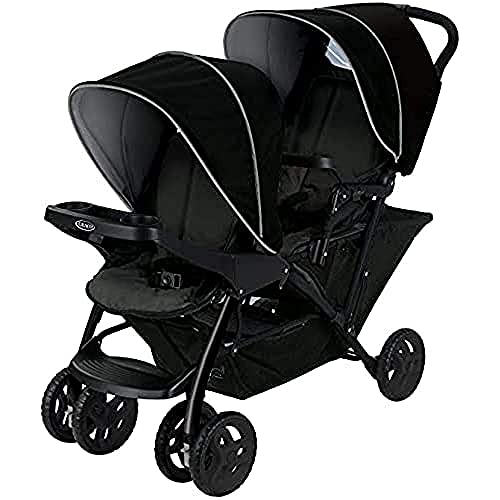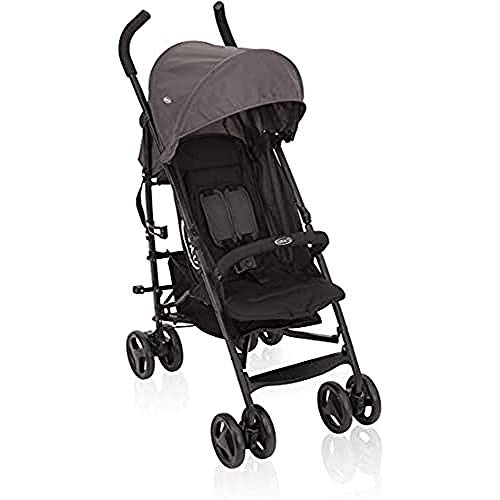10 Things That Your Family Taught You About Running Pram
페이지 정보

본문
 What to Look For 3 in 1 pram a Running Pram
What to Look For 3 in 1 pram a Running Pram A running pram is a stroller that is designed to handle greater speeds and has wheel suspension for more comfort for infants. They have a front wheel that can be locked to ensure safety, and hand brakes for more control.
A running pram is a stroller that is designed to handle greater speeds and has wheel suspension for more comfort for infants. They have a front wheel that can be locked to ensure safety, and hand brakes for more control.Most pelvic floor physical therapists advise that babies are nine months old prior to starting buggy running. However every child is unique.
Safety first
Involving your child taking part in your exercise routine can be an enjoyable experience, but it's vital to ensure safety first. Choose safe, quiet roads and wide, well-paved paths. Make sure to stick to the morning hours when your baby is most content. It's best to plan your run around the time of their meals. Babies tend to be fussy when they're full, so you want to ensure that everything goes smoothly. Essential features like a five-point harness and handbrake will ensure your baby's safety as you run and help to keep your control, especially when you're running at a high speed and may require a quick brake.
Parents who love their workouts that feel good, a running pram is an excellent option. Doubling up on calorie-burning outdoors exercise and cherishing bonding time is an unbeatable combination that's sure to keep you motivated even as your baby grows. You may be tempted compare your solo jogging pace with your jogging pace, but keep in mind that pushing a baby along with their equipment puts more strain on your legs. If you want to push yourself buy an air-filled stroller that has tires that absorb the shocks and smooth bumps.
Stability
Stability is essential when you're running with a baby in the pram. It's for your enjoyment as well as your child's safety. Select a sturdy and dependable pram with large wheels that can roll on all surfaces and absorbing the force of bumps, as well as a locking front wheel that can improve manoeuvrability at higher speeds. Make sure you choose a model with air-filled tires to keep pressure and reduce the chance for punctures.
The right pram will also allow you to maintain a natural running position without bending over or leaning too far back, which can cause aches and pains. It is important to find the proper balance between pushing harder and slowing down to ensure that you don't overstrain your knees, hips, or back.
Select a model with adjustable handlebars to suit your height to enhance your safety and comfort. This will stop you from having to lower your feet during your run, and also make sure that your wrists don't become too stressed.
There's no cookie-cutter answer for when your baby will be ready to 'graduate' from the pram, but involving your child in physical activity early on can give them the confidence to be independent and help establish the foundations of an active lifestyle. It's a great opportunity to spend time with your baby and help them get used to being outdoors.
Accelerate
The best running pushchairs prams provide a smooth, safe ride at a steady speed. They typically have an swivel front wheel that allows easy manoeuvring around town or for daily use but can be locked in a fixed position to ensure safety when traveling at a high speed. The rear wheels typically have suspension and are large to reduce the impact and smooth bumps. They should also be made of a tough, puncture-resistant material.
Making your child love to exercise with you can be an amazing feeling for parents and starting them off at an early age with a running pram can encourage an active lifestyle throughout their life. It's important to keep in mind that running with a lightweight stroller is different than running on your own. While you may be able to complete long runs more quickly however, your endurance might suffer and your child may be overwhelmed.
To avoid overdoing it, we recommend restricting your jogging to about 6km until you feel confident that your baby is at ease in their jogging stroller. Some babies might be able to handle more distances earlier, but we'd advise seeking advice from your pediatrician or family physician to make sure your child is able to handle an intense exercise. If you're planning to push your child uphill, it's recommended to do it after you've gained some experience on flat surfaces and at a speedy pace. You may also consider opting for an all-terrain pram with wide, high traction tires that are able to deal with roots, gravel and other natural obstacles.
Comfort
You'll also need to ensure that your child is as comfortable as you can. This could include an element that absorbs impact and reduces bumpiness as well as air-filled rubber tires that provide the same feel as bike tyres, but with no risk of punctures.
It's also crucial to choose the right time for your run, since babies are typically content after a nap, or eating. It's also worth considering the type of surface you'll be running on - damaged paths can be a nightmare for new pram runners, while smooth surfaces are more comfortable to run on at a faster pace.
Running sale prams are ideal for getting back into your fitness and keep your baby alongside you for your favourite adventures. Many feature adaptable designs that convert between a running pram, regular pram and bike trailer, which means you can continue to take your child on family excursions as they grow. Be aware that integrating your child in exercise isn't only about improving their health and well-being it's also about giving them the confidence and independence to enjoy the outdoors.
- 이전글What's The Current Job Market For CSGO Case Battle Professionals Like? 25.01.08
- 다음글You'll Be Unable To Guess Twin Stroller's Benefits 25.01.08
댓글목록
등록된 댓글이 없습니다.



